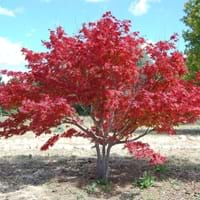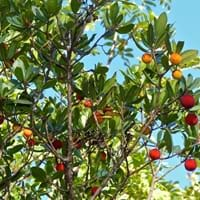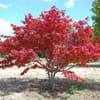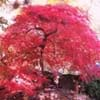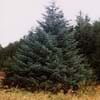Life Span
Perennial
Perennial
Origin
Eastern Asia, China, Japan, Korea
Mediterranean
Types
Not Available
Not Available
Habitat
gardens, Woodland Garden Secondary, Woodlands
limestone outcrops, Rocky areas, Woodlands
USDA Hardiness Zone
4-7
8-9
Sunset Zone
A3, 2a, 2b, 3a, 3b, 4, 5, 6, 7, 8, 9, 10, 12, 14, 15, 16, 17, 18, 19, 20, 21, 22, 23, 24
8, 9, 14, 15, 16, 17, 18, 19, 20, 21, 22, 23, 24
Habit
Oval or Rounded
Upright/Erect
Flower Color
Red
White, Light Pink
Flower Color Modifier
Not Available
Bicolor
Fruit Color
Red, Brown
Yellow, Red
Leaf Color in Spring
Red, Burgundy, Dark Red, Copper
Dark Green
Leaf Color in Summer
Red, Green, Bronze
Dark Green
Leaf Color in Fall
Red, Crimson, Orange Red
Dark Green
Leaf Color in Winter
Not Available
Dark Green
Leaf Shape
Palmate
Orbiculate
Plant Season
Spring, Summer, Fall, Winter
Spring, Summer, Fall, Winter
Sunlight
Partial Sun, Partial shade
Full Sun, Partial Sun
Type of Soil
Clay, Loam, Sand
Loam, Sand
The pH of Soil
Acidic, Neutral
Acidic, Neutral
Soil Drainage
Average
Well drained
Bloom Time
Early Spring, Spring, Late Spring, Early Summer
Spring, Late Spring, Early Summer, Summer, Late Summer, Early Fall, Fall, Late Fall
Tolerances
Not Available
Drought
Where to Plant?
Ground
Ground
How to Plant?
Budding, Seedlings, Stem Cutting
Seedlings
Plant Maintenance
Medium
Medium
Watering Requirements
Average Water Needs, Needs less watering
Requires regular watering
In Summer
Lots of watering
Lots of watering
In Spring
Moderate
Moderate
In Winter
Average Water
Average Water
Soil pH
Acidic, Neutral
Acidic, Neutral
Soil Type
Loam, Sand
Loam, Sand
Soil Drainage Capacity
Average
Well drained
Sun Exposure
Full Sun, Partial Sun, Partial shade
Full Sun, Partial Sun
Pruning
Remove damaged leaves, Remove dead branches, Remove dead leaves
Prune in early spring, Prune in late winter, Remove damaged leaves, Remove dead branches, Remove dead leaves
Fertilizers
All-Purpose Liquid Fertilizer, Apply N-P-K, since leafy plants, use higher nitrogen content fertilizer
All-Purpose Liquid Fertilizer
Pests and Diseases
Aphids, Beetles, Mealybugs, Red blotch, Scale, Sooty Mold
Red blotch
Plant Tolerance
Drought, Full Sun, Shade areas
Drought
Flowers
Insignificant
Showy
Flower Petal Number
Single
Single
Foliage Texture
Fine
Medium
Foliage Sheen
Matte
Glossy
Attracts
Not Available
Hummingbirds
Allergy
Not Available
Hay fever, Oral Allergy, Skin irritation
Aesthetic Uses
Bonsai, Borders
Beautification, Showy Purposes
Beauty Benefits
Not Available
Not Available
Environmental Uses
Air purification
Air purification
Medicinal Uses
Not Available
Antioxidants
Part of Plant Used
Sap
Fruits
Other Uses
Used as preservative
Traditional medicine, Used As Food, Used as Ornamental plant, Used for its medicinal properties
Used As Indoor Plant
No
Yes
Used As Outdoor Plant
Yes
Yes
Garden Design
Feature Plant, Foundation, Mixed Border
Shade Trees, Street Trees
Botanical Name
ACER palmatum 'Skeeter's Broom'
ARBUTUS 'Marina'
Common Name
Downy Japanese Maple, Fullmoon Maple, Japanese Maple
Marina Strawberry Tree, Strawberry Tree
In Hindi
Japanese Maple
झरबेरी पेड़
In German
japanischer Ahorn
Erdbeerbaum
In French
érable du Japon
arbousier
In Spanish
arce japonés
Árbol de fresa
In Greek
Japanese Maple
φράουλα δέντρο
In Portuguese
bordo japonês
medronheiro
In Polish
Klon japoński
Strawberry Tree
In Latin
Acer palmatum
arbutus
Phylum
Tracheophyta
Magnoliophyta
Class
Magnoliopsida
Magnoliopsida
Order
Sapindales
Ericales
Family
Aceraceae
Ericaceae
Clade
Angiosperms, Eudicots, Rosids
Angiosperms, Asterids, Eudicots
Tribe
Not Available
Not Available
Subfamily
Not Available
Not Available
Number of Species
Not Available
Not Available
Season and Care of Japanese Maple and Strawberry Tree
Season and care of Japanese Maple and Strawberry Tree is important to know. While considering everything about Japanese Maple and Strawberry Tree Care, growing season is an essential factor. Japanese Maple season is Spring, Summer, Fall and Winter and Strawberry Tree season is Spring, Summer, Fall and Winter. The type of soil for Japanese Maple is Clay, Loam, Sand and for Strawberry Tree is Loam, Sand while the PH of soil for Japanese Maple is Acidic, Neutral and for Strawberry Tree is Acidic, Neutral.
Japanese Maple and Strawberry Tree Physical Information
Japanese Maple and Strawberry Tree physical information is very important for comparison. Japanese Maple height is 150.00 cm and width 90.00 cm whereas Strawberry Tree height is 1,220.00 cm and width 610.00 cm. The color specification of Japanese Maple and Strawberry Tree are as follows:
Japanese Maple flower color: Red
Japanese Maple leaf color: Red, Burgundy, Dark Red and Copper
Strawberry Tree flower color: White and Light Pink
- Strawberry Tree leaf color: Dark Green
Care of Japanese Maple and Strawberry Tree
Care of Japanese Maple and Strawberry Tree include pruning, fertilizers, watering etc. Japanese Maple pruning is done Remove damaged leaves, Remove dead branches and Remove dead leaves and Strawberry Tree pruning is done Prune in early spring, Prune in late winter, Remove damaged leaves, Remove dead branches and Remove dead leaves. In summer Japanese Maple needs Lots of watering and in winter, it needs Average Water. Whereas, in summer Strawberry Tree needs Lots of watering and in winter, it needs Average Water.
